Topographic Control of Wind- and Thermally Induced Circulation in an Enclosed Water Body
Abstract
1. Introduction
2. Methodology
2.1. Numerical Simulation
2.2. Simulation Cases
- In the Baseline case, observed values were used for wind speed, wind direction, and air temperature.
- In the WS0_AT25°C case, the wind speed was set to 0 m/s, and the air temperature was fixed at 25 °C; no wind direction was specified.
- In the WSoriginal_AT25°C case, the observed wind speed and wind direction were used, while the air temperature was fixed at 25 °C.
- In the WSeast0towest5m/s_AT25°C and WSeast0towest-5m/s_AT25°C cases, a wind speed gradient from 5 m/s to 0 m/s was imposed from west to east, with the wind direction set to northward and southward, respectively. The air temperature was fixed at 25°C.
- In the WSeast5towest0m/s_AT25°C and WSeast-5towest0m/s_AT25°C cases, a wind speed gradient from 5 m/s to 0 m/s was imposed from east to west, with the wind direction set to northward and southward, respectively. The air temperature was fixed at 25 °C.
- In the WSsouth0tonorth5m/s_AT25°C and WSsouth0tonorth-5m/s_AT25°C cases, a wind speed gradient from 5 m/s to 0 m/s was imposed from north to south, with the wind direction set to eastward and westward, respectively. The air temperature was fixed at 25 °C.
- In the WSsouth5tonorth0m/s_AT25°C and WSsouth-5tonorth0m/s_AT25°C cases, a wind speed gradient from 5 m/s to 0 m/s was imposed from south to north, with the wind direction set to eastward and westward, respectively. The air temperature was fixed at 25 °C.
- In the WS0_AToriginal case, the wind speed was set to 0 m/s, and the observed air temperature was used.
- In the WS0_ATeast+2.5west-2.5°C and WS0_ATeast-2.5west+2.5°C cases, the wind speed was set to 0 m/s, and a horizontal air temperature gradient of +2.5 °C to −2.5 °C and −2.5 °C to +2.5 °C was imposed from east to west, respectively.
- In the WS0_ATsouth+2.5north-2.5°C and WS0_ATsouth-2.5north+2.5°C cases, the wind speed was set to 0 m/s, and a horizontal air temperature gradient of +2.5 °C to −2.5 °C and −2.5 °C to +2.5 °C was imposed from south to north, respectively.
3. Results and Discussion
3.1. The Flow Field in the Case of Baseline Case
3.2. Wind-Driven Gyres: Directional Asymmetry and Topographic Modulation Under Spatially Varying Wind Fields
3.3. Thermal Gradient-Driven Gyres: Seasonal Reversals and Topographic Modulation Under Windless Conditions
4. Conclusions
Funding
Institutional Review Board Statement
Informed Consent Statement
Data Availability Statement
Conflicts of Interest
References
- Cushman-Roisin, B.; Beckers, J.M. Introduction to Geophysical Fluid Dynamics: Physical and Numerical Aspects; Academic Press: Cambridge, MA, USA, 2011. [Google Scholar]
- Bennington, V.; McKinley, G.A.; Kimura, N.; Wu, C.H. General circulation of Lake Superior: Mean, variability, and trends from 1979 to 2006. J. Geophys. Res. 2010, 115, C12015. [Google Scholar] [CrossRef]
- Beletsky, D.; Schwab, D.J. Modeling circulation and thermal structure in Lake Michigan: Annual cycle and interannual variability. J. Geophys. Res. 2001, 106, 19745–19771. [Google Scholar] [CrossRef]
- Huang, A.; Rao, Y.R.; Lu, Y.; Zhao, J. Hydrodynamic modeling of Lake Ontario: An intercomparison of three models. J. Geophys. Res. 2010, 115, C12076. [Google Scholar] [CrossRef]
- Hamze-Ziabari, S.M.; Lemmin, U.; Foroughan, M.; Reiss, R.S.; Barry, D.A. Chimney-Like Intense Pelagic Upwelling in the Center of Basin-Scale Cyclonic Gyres in Large Lake Geneva. J. Geophys. Res. Ocean. 2023, 128, e2022JC019592. [Google Scholar] [CrossRef]
- Stanev, E.V.; Chtirkova, B. Interannual change in mode waters: Case of the Black Sea. J. Geophys. Res. Ocean. 2021, 126, e2020JC016429. [Google Scholar] [CrossRef]
- Oguz, T.; Besiktepe, S. Observations on the Rim Current structure, CIW formation and transport in the western Black Sea. Deep. Sea Res. Part I Oceanogr. Res. Pap. 1999, 46, 1733–1753. [Google Scholar] [CrossRef]
- Ishikawa, K.; Kumagai, M.; Vincent, W.F.; Tsujimura, S.; Nakahara, H. Transport and accumulation of bloom-forming cyanobacteria in a large, mid-latitude lake: The gyre-Microcystis hypothesis. Limnology 2002, 3, 87–96. [Google Scholar] [CrossRef]
- Imberger, J. Flux paths in a stratified lake: A review. In Physical Processes in Lakes and Oceans; American Geophysical Union: Washington, DC, USA, 1998; pp. 1–17. [Google Scholar]
- Endoh, S. Diagnostic analysis of water circulations in Lake Biwa. J. Oceanogr. Soc. Jpn. 1978, 34, 250–260. [Google Scholar] [CrossRef]
- Oonishi, Y. Development of the current induced by the topographic heat accumulation (I) The case of the axisymmetric basin. J. Oceanogr. Soc. Jpn. 1975, 31, 243–254. [Google Scholar] [CrossRef]
- Lemmin, U. Insights into the dynamics of the deep hypolimnion of Lake Geneva as revealed by long-term temperature, oxygen, and current measurements. Limnol. Oceanogr. 2020, 65, 2092–2107. [Google Scholar] [CrossRef]
- Reiss, R.S.; Lemmin, U.; Barry, D.A. Wind-induced hypolimnetic upwelling between the multi-depth basins of Lake Geneva during winter: An overlooked deepwater renewal mechanism? J. Geophys. Res. Ocean. 2022, 127, e2021JC018023. [Google Scholar] [CrossRef]
- Reiss, R.S.; Lemmin, U.; Cimatoribus, A.A.; Barry, D.A. Wintertime Coastal Upwelling in Lake Geneva: An Efficient Transport Process for Deepwater Renewal in a Large, Deep Lake. J. Geophys. Res. Ocean. 2020, 125, e2020JC016095. [Google Scholar] [CrossRef]
- MacIntyre, S.; Romero, J.R.; Kling, G.W. Spatial-temporal variability in surface layer deepening and lateral advection in an embayment of Lake Victoria, East Africa. Limnol. Oceanogr. 2002, 47, 656–671. [Google Scholar] [CrossRef]
- Koue, J.; Shimadera, H.; Matsuo, T.; Kondo, A. Evaluation of Thermal Stratification and Flow Field Reproduced by a Three-Dimensional Hydrodynamic Model in Lake Biwa, Japan. Water 2018, 10, 47. [Google Scholar] [CrossRef]
- Koue, J.; Shimadera, H.; Matsuo, T.; Kondo, A. Analysis of the effects of climate change on the gyre in Lake Biwa, Japan. J. Hydroinform. 2023, 25, 243–257. [Google Scholar] [CrossRef]
- Kondo, J. Fundamentals of the surface heat balance. In Meteorology of Water Environment; Asakura Publishing: Tokyo, Japan, 1994; Chapter 6; pp. 132–159. (In Japanese) [Google Scholar]
- Schwab, D.J.; Beletsky, D. Relative effects of wind stress curl, topography, and stratification on large-scale circulation in Lake Michigan. J. Geophys. Res. Ocean. 2003, 108, 3044. [Google Scholar] [CrossRef]
- Csanady, G.T. Wind-induced barotropic motions in long lakes. J. Phys. Oceanogr. 1973, 3, 429–438. [Google Scholar] [CrossRef]
- Gill, A.E. Atmosphere-Ocean Dynamics; Number 30 in International Geophysics Series; Academic Press: Cambridge, MA, USA, 1982. [Google Scholar]
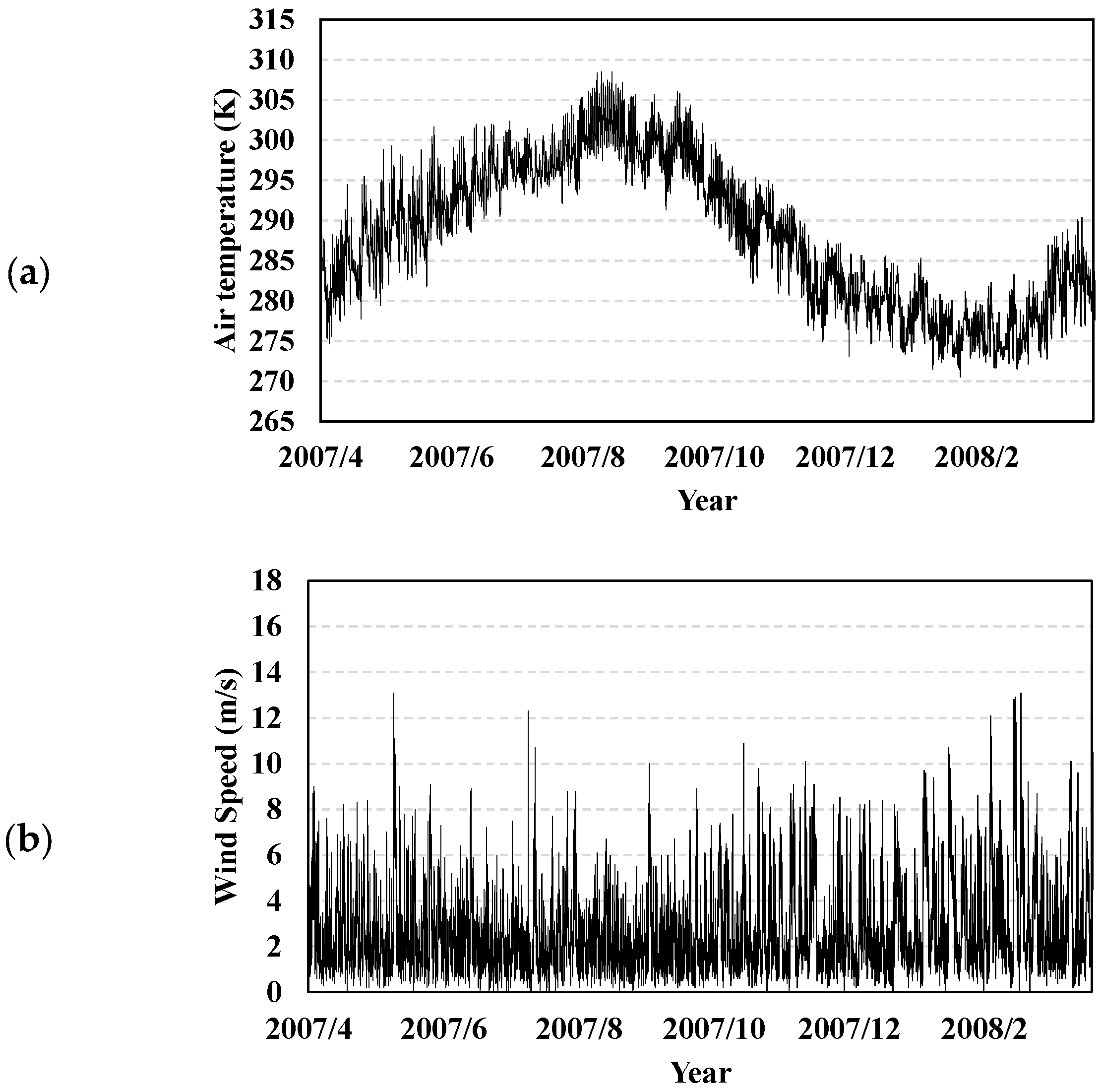
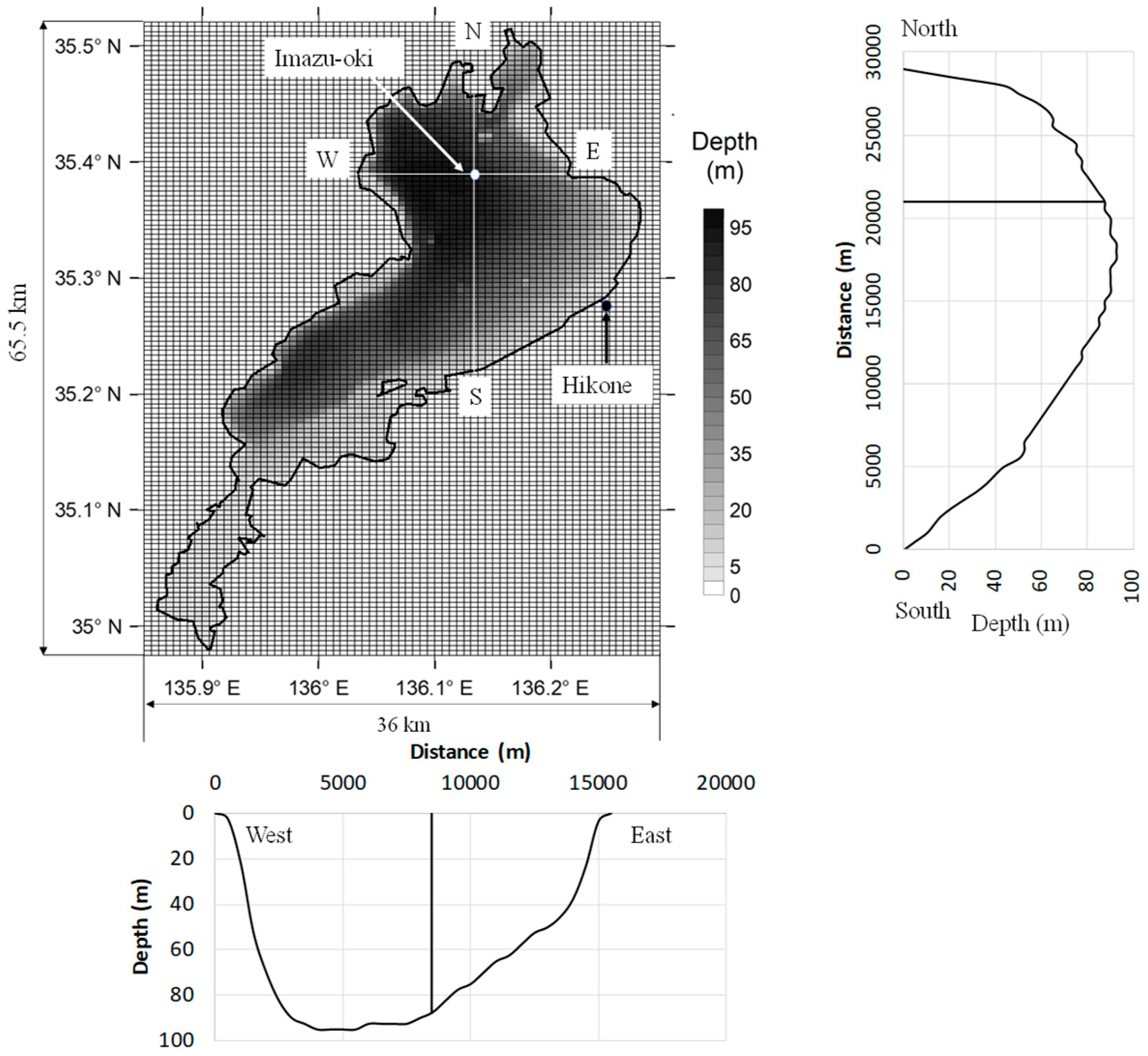
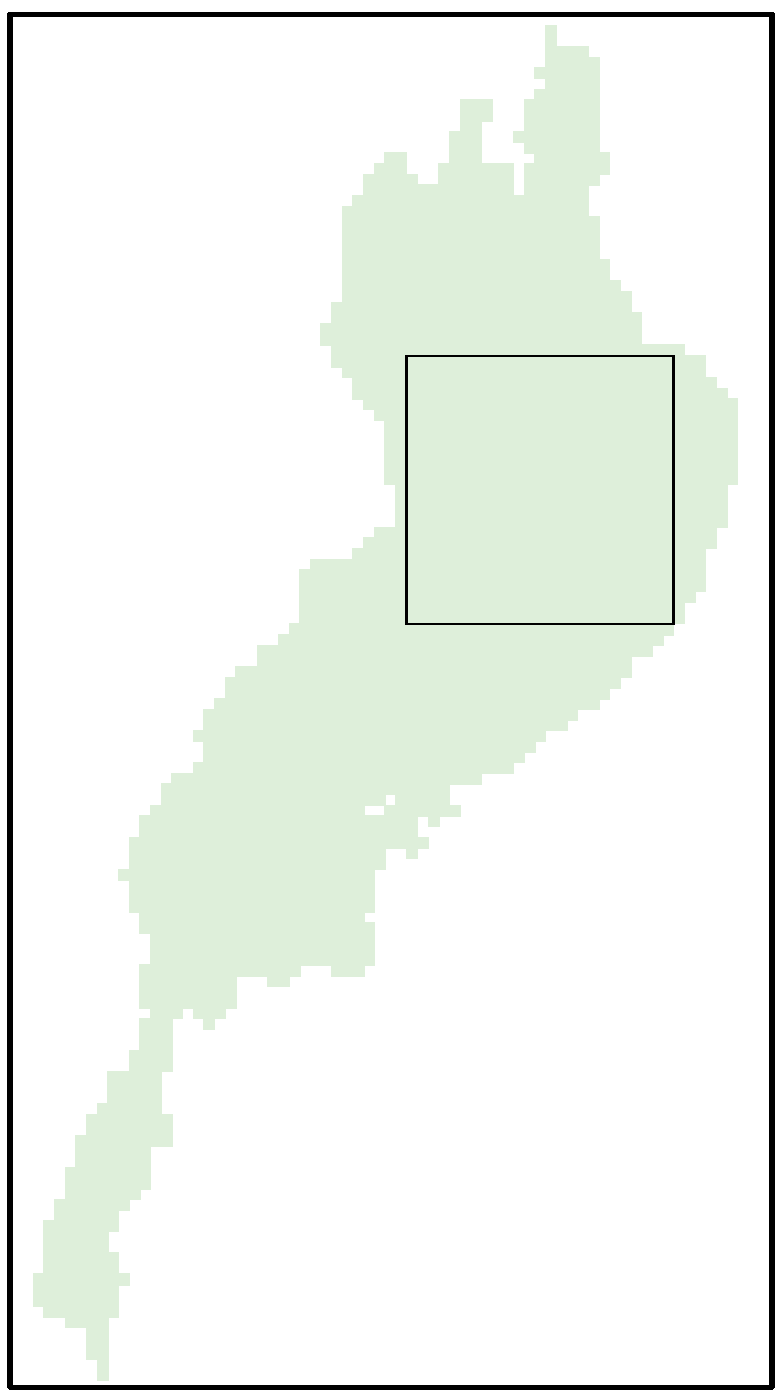
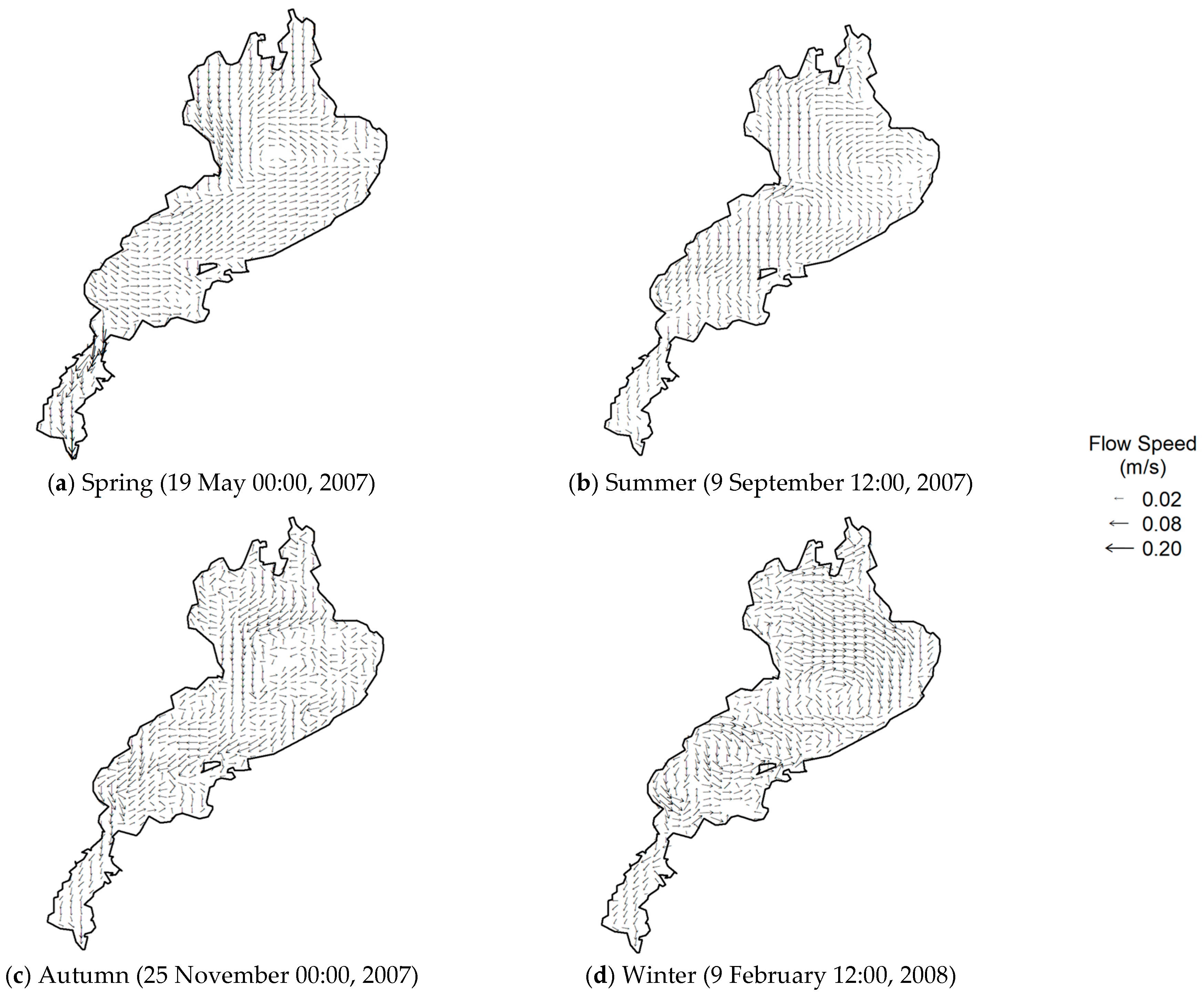
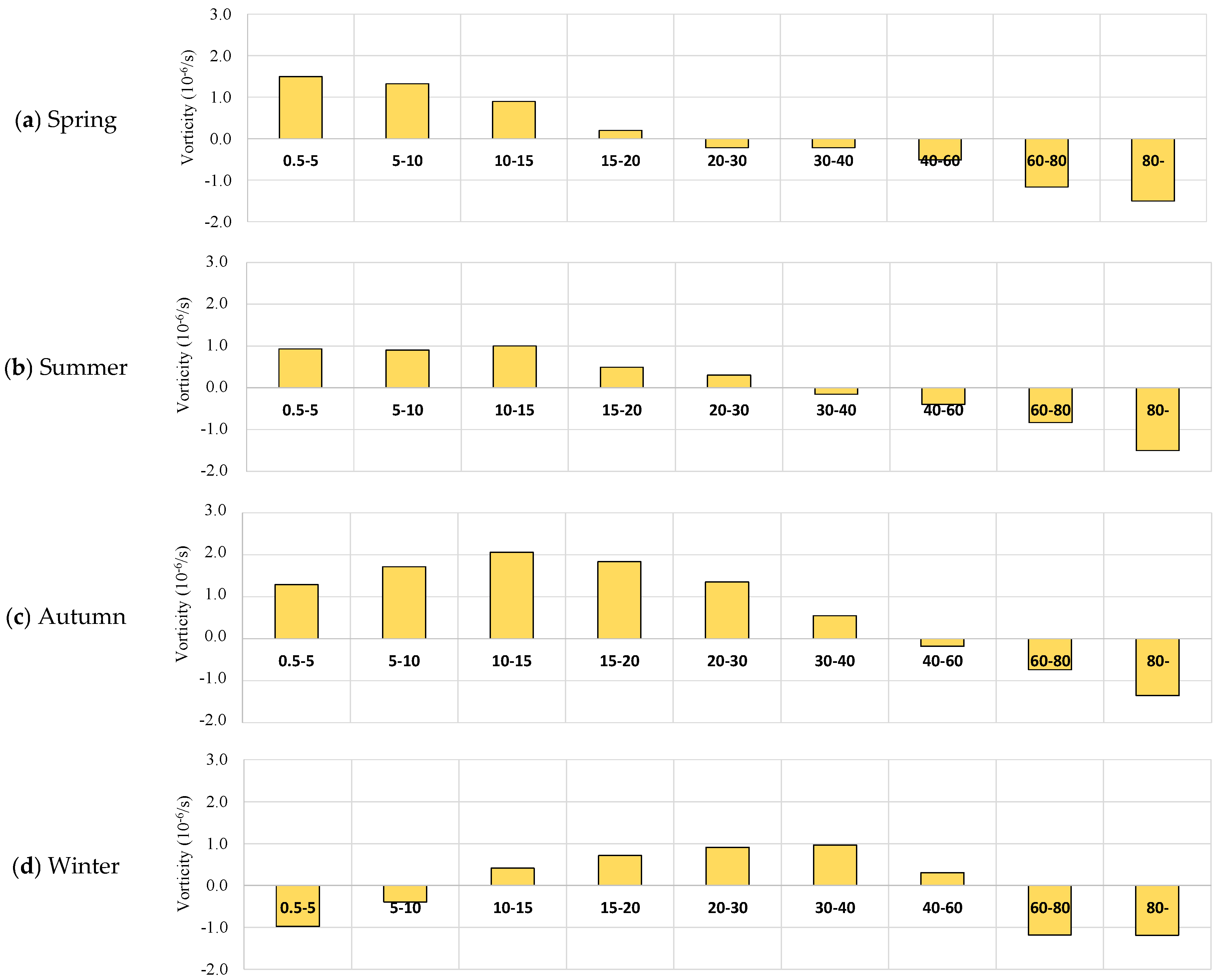

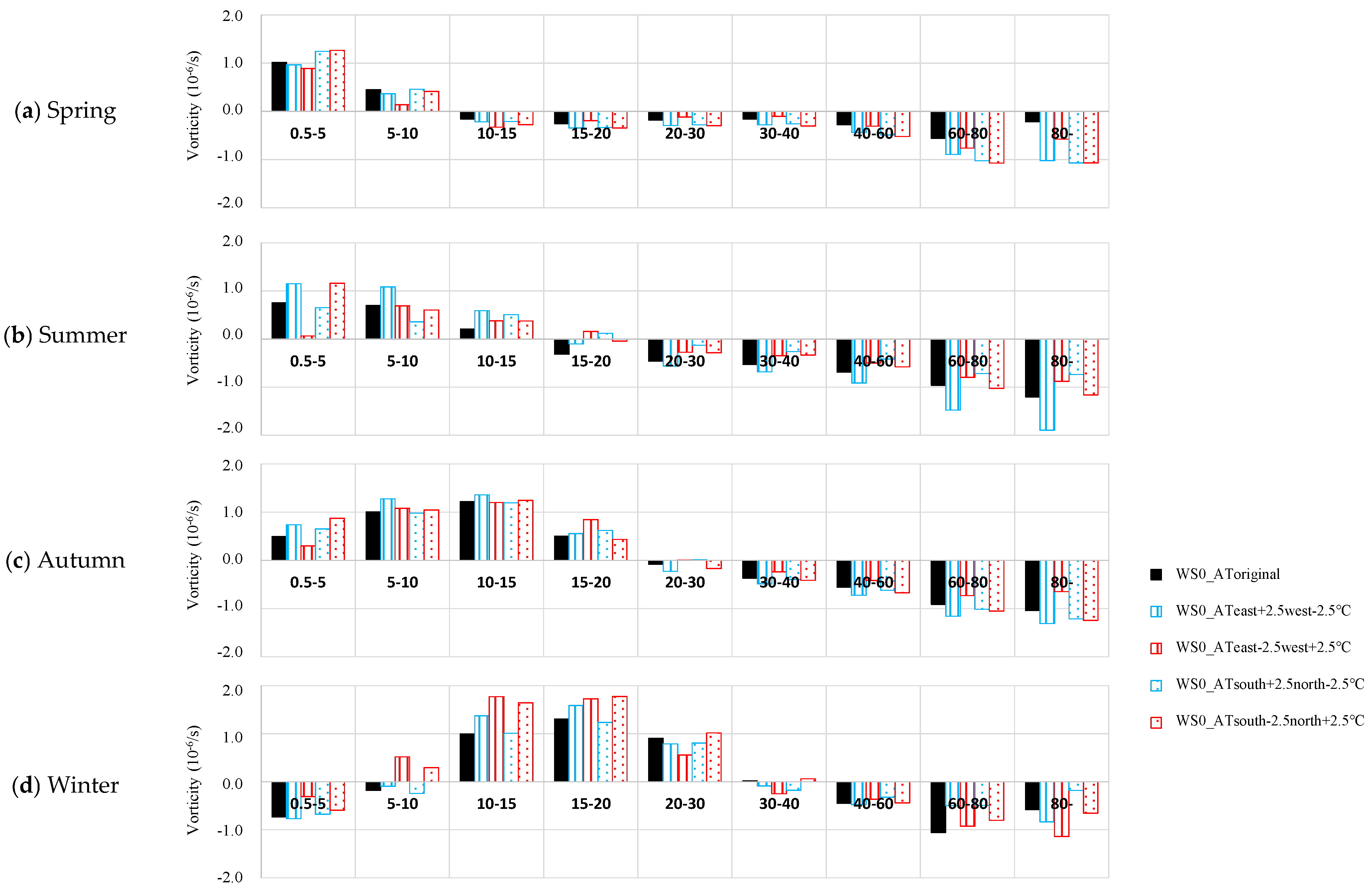
| Case | Wind Speed | Wind Direction | Air Temperature |
|---|---|---|---|
| Baseline | Original | Original | Original |
| WS0_AT25°C | 0 | - | Constant 25 °C |
| WSeast0towest5m/s_AT25°C | 5 m/s to 0 m/s gradient from west to east | Southerly | |
| WSeast5towest0m/s_AT25°C | 5 m/s to 0 m/s gradient from east to west | Southerly | |
| WSsouth0tonorth5m/s_AT25°C | 5 m/s to 0 m/s gradient from north to south | Westerly | |
| WSsouth5tonorth0m/s_AT25°C | 5 m/s to 0 m/s gradient from south to north | Westerly | |
| WS0_AToriginal | 0 | - | Original |
| WS0_ATeast+2.5west-2.5°C | Observed +2.5 °C to −2.5 °C gradient from east to west | ||
| WS0_ATeast-2.5west+2.5°C | Observed +2.5 °C to −2.5 °C gradient from west to east | ||
| WS0_ATsouth+2.5north-2.5°C | Observed +2.5 °C to −2.5 °C gradient from south to north | ||
| WS0_ATsouth-2.5north+2.5°C | Observed +2.5 °C to −2.5 °C gradient from north to south |
Disclaimer/Publisher’s Note: The statements, opinions and data contained in all publications are solely those of the individual author(s) and contributor(s) and not of MDPI and/or the editor(s). MDPI and/or the editor(s) disclaim responsibility for any injury to people or property resulting from any ideas, methods, instructions or products referred to in the content. |
© 2025 by the author. Licensee MDPI, Basel, Switzerland. This article is an open access article distributed under the terms and conditions of the Creative Commons Attribution (CC BY) license (https://creativecommons.org/licenses/by/4.0/).
Share and Cite
Koue, J. Topographic Control of Wind- and Thermally Induced Circulation in an Enclosed Water Body. Geosciences 2025, 15, 244. https://doi.org/10.3390/geosciences15070244
Koue J. Topographic Control of Wind- and Thermally Induced Circulation in an Enclosed Water Body. Geosciences. 2025; 15(7):244. https://doi.org/10.3390/geosciences15070244
Chicago/Turabian StyleKoue, Jinichi. 2025. "Topographic Control of Wind- and Thermally Induced Circulation in an Enclosed Water Body" Geosciences 15, no. 7: 244. https://doi.org/10.3390/geosciences15070244
APA StyleKoue, J. (2025). Topographic Control of Wind- and Thermally Induced Circulation in an Enclosed Water Body. Geosciences, 15(7), 244. https://doi.org/10.3390/geosciences15070244






